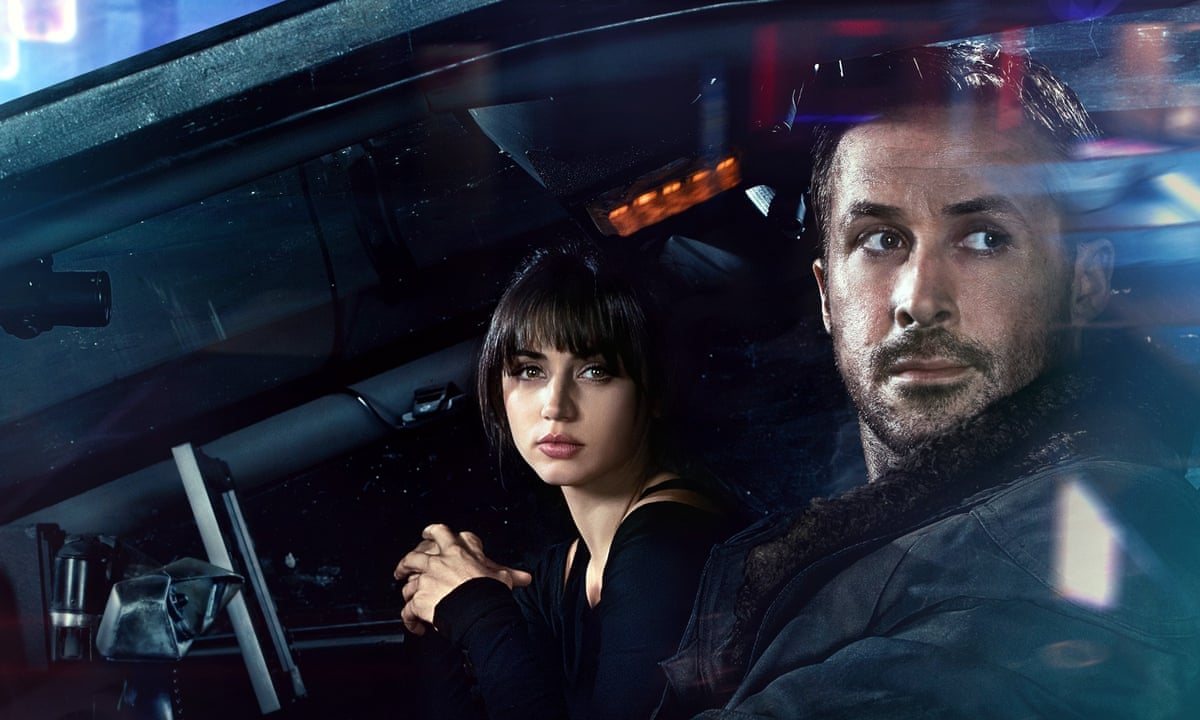Country of origin: United States
Creator: Denis Villeneuve
Genre: epic neo-noir science fiction
Release: October 6, 2017

Welcome to Los Angeles in the year 2049, more resembling today’s Los Angeles than the city from the original “Blade Runner” (set in 2019). Thirty years have passed since the events of the beautiful and dark dystopia of the first film. The case of the missing Deckard is continued by officer-replicant K. (Ryan Gosling). During work hours, he “retires” his own kind, and in his spare time, he spends time with his holographic girlfriend. On a typical workday, he tracks down a replicant peacefully living on a farm (the wonderful Dave Bautista from “Guardians of the Galaxy” in this small role). What K. finds there forces him to embark on a search not only for the solution to the case but also for his own humanity.
The plot plays a dominant role in the sequel, which is the main difference of the second film. In the original, the plot was relatively simple and did not overshadow everything – the blade runner searches for four replicants, follows their trail, kills them one by one, the last one almost kills him but decides to spare him suddenly, then delivers a magnificent monologue and dies, leaving Deckard to wrestle with the question of whether he is a replicant himself. By the way, the sequel also does not provide a definitive answer to this old question.
The first thing you notice in “Blade Runner 2049” is the cinematography. Villeneuve once again collaborates with one of the greatest cinematographers in history, Roger Deakins, who continues to amaze with his shots. The set design, props, practical effects, and graphics certainly helped him create such a stunning image. Everything feels real, textured, not drawn. There are many shots and whole sequences that look absolutely otherworldly, shot very much in the spirit of Tarkovsky – contemplative, unhurried, detached.
Secondly, the music. Hans Zimmer and Benjamin Wallfisch have created something that strongly resembles the sound of the original film, but if Vangelis sounded melancholic, here the tracks are much more aggressive, roaring, yet the feeling that this is an evolution of the same music remains. Zimmer can be versatile, although here he still can’t resist his tendency to thunder quite straightforwardly.

I don’t know why almost everywhere the genre is indicated as cyberpunk, action, and science fiction, but the dramatic component of this film is incredibly strong. Personally, I would rate it above all else in its entirety. Blade Runner 2049 maintains the mood and atmosphere of the first film. It continues its plot but reveals it in a completely new light while still maintaining its original connection.
Blade Runner 2049 has an open ending, like the original film. I don’t think it was done to leave a “hook” for a sequel, rather to enhance the effect of incompleteness and mystery.
Drawbacks
I couldn’t quite understand what thoughts the new film was supposed to provoke in me. It is too concrete in its story, attracting too much attention to it, getting carried away with rearranging figures on the board and spinning cups, and too abstract in its themes. They are voiced but it’s unclear in which direction the thought should move; the idea doesn’t develop, or it’s simply not visible behind the whirlwind of plot twists.
Also, I feel like there’s something off about the main character. This is not a criticism of Gosling, but something in his concept and story is not taken into account or doesn’t work. It was quite difficult to empathize with such a character; something didn’t click, didn’t fit into place until the end. Maybe it’s because of his limited emotional range or because of an unclear resilience that made it hard to understand when he was truly in danger and so on.
Conclusion
This is not a movie for entertainment, not a story about a fantastic world of the future. “Blade Runner 2049” requires a mood and atmosphere no less than its predecessor. It’s a film about suffering under the guise of a technological future. Bright neon signs, flashy advertisements, smiles of night butterflies – all just a cover for a pitiful existence in a cruel world where replicants are more humane than humans themselves.

Leave a comment